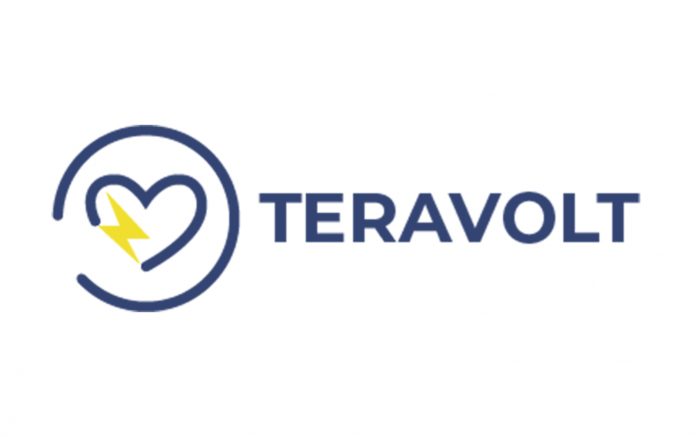By Marina Chiara Garassino, MD, and Leora Horn, MD, MSc, FRCPC
Posted: June 9, 2020


The new SARS-CoV-2 (COVID-19) virus appeared at the end of December 2019 in Wuhan, China, and soon spread globally. In February 2020, the first cases appeared in Europe, and in particular, in Lombardy, in northern Italy. In March 2020, the World Health Organization declared it a pandemic. At that time, the perception was that the pandemic might only last a few weeks and that COVID-19 would spread to many other countries.
Initial preliminary data from China did not clarify whether patients with cancer were more at risk of contracting the virus or if they were more at risk of developing more severe complications than the general population. Subsequent data indicated that the prevalence of infection among patients with cancer was between 1% and 2%—only slightly higher than the general population. However, numerous cases of severe infection among patients with lung cancer were reported consistently and globally. Furthermore, from the initial data, it seemed that the general populations who were most at risk for complications were those affected by cardiovascular diseases, diabetes, and hypertension. In particular, a higher incidence of complications was reported in male, older, and obese patients; unfortunately, patients with thoracic tumors very often exhibit these characteristics.
At the beginning of the pandemic, most hospitals underwent radical reorganization processes. In oncology in particular, a system of priorities was put into place, and providers were encouraged to use telehealth as much as possible. Based on the hypothesis that the pandemic would last for a relatively short period, most routine checks ups were delayed, treatment schedules were modified, and in some cases surgical procedures were placed on hold. Scientific societies around the world adapted guidelines to follow during the pandemic. These guidelines were intended to reduce patient contact with the medical system as much as possible and to avoid treatments for which the safety was unknown. This left a series of open questions. For example, can cancer treatments aggravate a COVID-19 infection? Or is it possible to identify a hematologic profile that allows us to identify patients at risk a priori? In addition, it became increasingly clear that if the pandemic was to last longer than expected, although the adapted guidelines would reduce the risk infection with SARS-CoV-2, they would increase the risk of cancer going undiagnosed or untreated.
TERAVOLT: Inception and Early Data
For this reason, we decided to form a consortium to answer our questions as quickly and as thoroughly as possible. TERAVOLT is a global registry that brought together cancer centers from five continents. It is dedicated specifically to thoracic diseases because the first reports from China seemed to indicate that this was the most at-risk category, along with hematologic diseases. The platform was created in record time: The idea was borne on March 15, 2020; the first case report form was created on the University of Vanderbilt’s REDCap platform on March 18, 2020; and we had a finalized protocol with an active steering committee on March 20, 2020. Another fundamental step was that after only 6 days, the protocol received a single national ethical approval for Italy. This approval was followed by unique national approvals from other countries.
Another fundamental step was the support of scientific societies, in particular the IASLC, the European Society for Medical Oncology (ESMO), the European Thoracic Oncology Platform (ETOP), and the European Respiratory Society (ERS). As of the end of May 2020, the Lung Ambition Alliance, of which the IASLC is a founding partner, has agreed to provide funding for the registry. This funding, although with the international support, was instrumental in disseminating the study globally and supporting its importance. As of May 12, 2020, 190 institutions from 28 countries on five continents have expressed their interest in joining TERAVOLT. It is important to note that no center alone, no matter how affected, would have had the independent statistical power to solve the questions we have set out to answer.
These factors have allowed us to stay united and have enabled us to present the first 200 cases at the American Association for Cancer Research (AACR) 2020 Annual Meeting.1 The initial data unfortunately have demonstrated a very high mortality rate in patients with thoracic malignancies and identified a large number of patients who were not been offered resuscitation treatments. The first 200 cases did not allow us to determine the profile of patients with thoracic cancer who are most at risk of severe COVID-19; however, this study is proceeding with rapid enrollment, and we hope that this will be possible in the near future.
In data from the AACR presentation, the median age of study participants was 68 years, and 29.5% were females. The most common histology was NSCLC (75.5%), followed by SCLC (14.5%). In addition, 73.5% of all patients had stage IV disease. A total of 73.5% of patients (147 out of 200) received systematic therapies, which included 19%, 32.7%, and 23.1% of patients on tyrosine kinase inhibitors alone, chemotherapy alone, and immunotherapy alone, respectively; 13.6% of patients were receiving a chemotherapy–immunotherapy combination. A total of 152 (76.0%) patients were hospitalized, and 66 (33.3%) died, with the majority of patients not being offered intensive care therapy. Univariate analyses revealed that the presence of chronic obstructive pulmonary disease and smoking was associated with increased risk of hospitalization, and more than one comorbidity was associated with increased risk of hospitalization and death. Tumor type and cancer therapy did not affect survival. At multivariate analysis, no factors were associated with risk of death.
In a later presentation at the 2020 ASCO Annual Meeting (LBA111), data 400 total patients were presented. Of these, 169 have recovered, 118 have ongoing COVID-19 infection, and 141 have died—a mortality rate of 35.5%. Of the reported deaths, 10.6% were due to progressive disease, 79.4% were due to the COVID-19 infection, and the combination of both resulted in the remaining 8.5% of deaths.2 Chemotherapy within 3 months of COVID-19 diagnosis, administration of prednisone > 10 mg per day, age older than 65 years, and ECOG performance status of 1 or more were all associated with increased risk of death from COVID-19.
From both the initial and expanded data, it is clear that patients with thoracic cancer and COVID-19 are at high risk for hospitalization. Of the total patients, 78% were hospitalized, and 8.3% of patients were eventually admitted to ICU; however, only 5% of these were placed on a ventilator.2
Concluding Thoughts
Although COVID-19 death rates risk overcoming cancer death rates, the same speed and collective participation that we managed to achieve for this study should be applied to oncology in general. It is essential to protect patients from COVID-19 as much as possible, but we must balance the benefits of protection from COVID-19 with the risk of increased cancer mortality. A recent study from the Netherlands Cancer Registry3 has already shown that the number of diagnoses of cancer since the start of the pandemic has clearly decreased; this can translate into an increase in future diagnoses of patients with more advanced disease.
Over the past 5 years, advancements in lung cancer care have been extraordinary. Patients now live for years. Many patients with lung cancer who died during the pandemic died from COVID-19 infection and not from their therapy. The TERAVOLT data suggest a lower rate of transfer of patients with lung cancer to the intensive care unit compared to other studies. Clearly, those patients who are benefiting from cancer therapy are entitled to attempts at life-prolong treatment in the face of COVID-19. Of course, this partially depends on resource allocations, particularly when deficits in intensive care staff and services are stretched thinner. Although this has been a major scientific journey, it is also a human journey. In the union of our abilities as physicians and in the shared objective of helping our patients, we have found so much strength to face this period of strain in combating the infection. We would encourage all health care providers to call on these shared goals when making the most difficult of decisions in under-resourced areas.
The TERAVOLT registry will continue to collect data throughout the ongoing pandemic to assess the effectiveness of specific chemotherapy/immunotherapy regimens and specific number of lines of therapy in terms of how they affect the overall risk of hospitalization for, as well as survival of patients with lung cancer and COVID-19.
Reference:
1. Garassino MC. TERAVOLT (Thoracic cancERs international coVid 19 cOLlaboraTion): First results of a global collaboration to address the impact of COVID-19 in patients with thoracic malignancies. Presented at: American Association for Cancer Research 2020 Annual Meeting; April 28, 2020; Virtual Meeting.
2. Horn L, Whisenant JG, Torri V, et al. Thoracic Cancers International COVID-19 Collaboration (TERAVOLT): Impact of type of cancer therapy on survival. J Clin Oncol 38: 2020 (suppl; abstr LBA111).
3. Dinmohamed AG, Visser O, Verhoeven RHA, et al. Fewer cancer diagnoses during the COVID-19 epidemic in the Netherlands. Lancet Oncol. 2020;21(6):750-751.
About the Authors:
Dr. Garassino is the chief of the Thoracic Oncology Unit at Istituto Nazionale dei Tumori Cancer Institute in Milan, Italy.
Dr. Horn is an Ingram Associate Professor of Cancer Research at Vanderbilt Ingram Cancer Center and associate professor of Medicine in the Division of Hematology/Oncology at the Vanderbilt University Medical Center.
To participate in the TERAVOLT registry, visit http://teravolt-consortium.org. Local IRB approval is required before data entry can begin.











